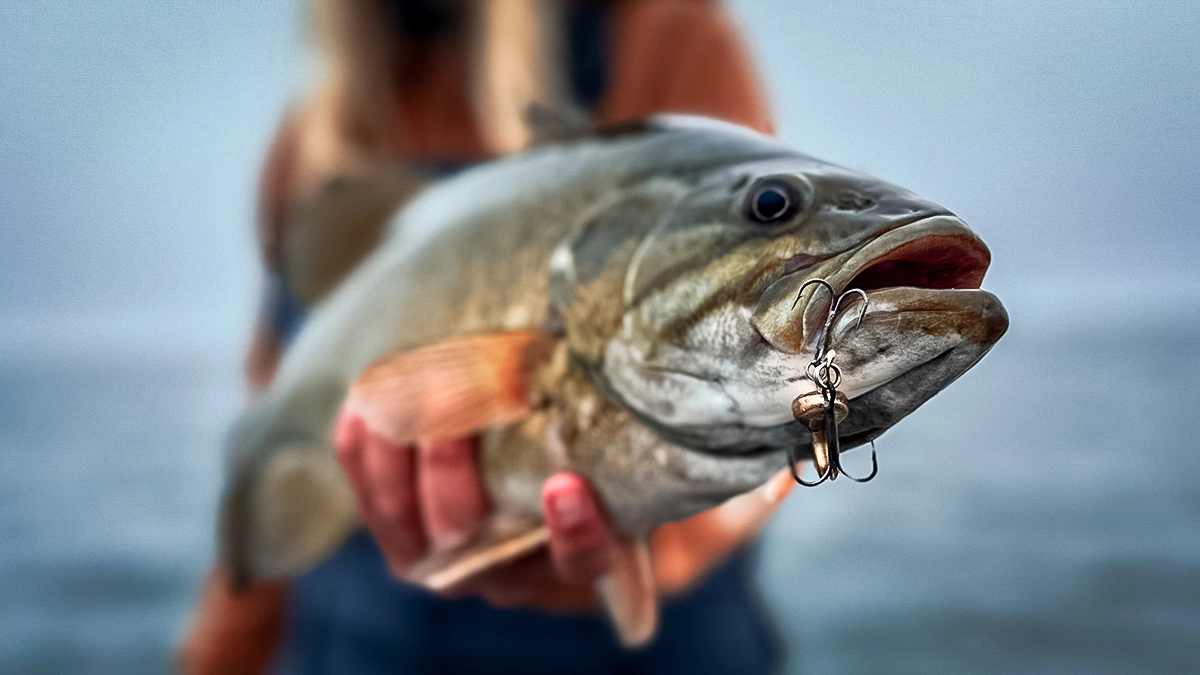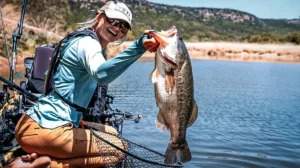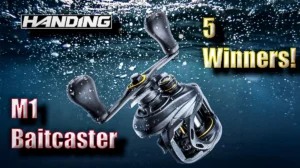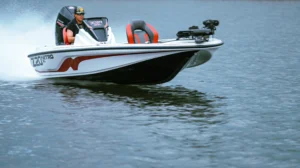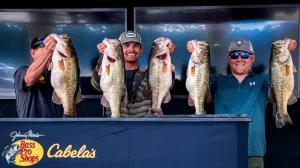As the red sun rises over the trees, heavy frost covers the boat. Your breath is as thick as fog and water like glass. You bundle up like the Michelin man in preparation for the long ride out to smallmouth Disneyland. After coming down off the plane and regaining feeling in your fingers, the screen lights up with smallmouth over your favorite rock pile. The first cast jitters start to warm you up as you cast out your blade bait.
With the first few vibrations on the first lift of the blade, the bait falls back to the bottom and the line goes slack. A fierce hookset is followed by crazy headshakes and peeling drag. The massive smallmouth tries to jump and its big enough that it can barely breach the surface. You see that blade deep in its mouth as you net the beast. A true deep cold water giant trying to fatten up and gain every calorie possible before a long winter’s nap. This is the bite I wait all year for.
Why Blade Baits are So Effective and Best Combos
If I had to pick one way to catch bass for the rest of my fishing career, it would be throwing some sort of blade bait. In my honest opinion, it is one of the most effective baits and techniques to catch bass when the water is cold during late fall and early spring.
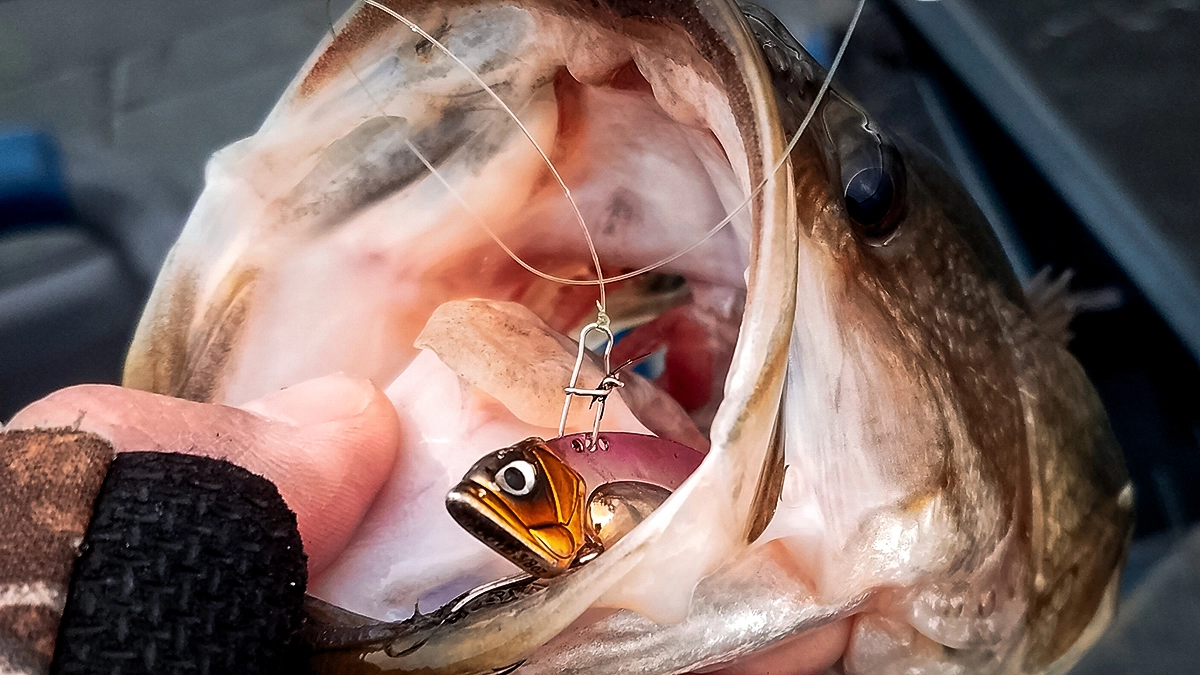
Whether its deep smallmouth sitting close to the bottom over rocks or largemouth cruising the edges of dying weed beds, the blade bait has a time and place for all fishing applications.
For years, I’ve tried to find the perfect combo for throwing these types of baits. It’s truly an art to not overwork the bait to get the correct lift, but also to have the length to fight the fish and have control. Some anglers really like rods in the 7-foot class to really get some lift on the bait, but I’m the complete opposite.
To me, the shorter the rod the better, but not too short. When I first started doing this, I had a small 6-foot medium-action spinning rod that worked amazingly. I was able to get more bites, but my landing percentage was awful.
After lots of trial and error, I’ve found that a 6’6” to a 6’8” rod with a medium-action and an extra-fast-action tip is the most ideal blade bait rod. It’s long enough to make a long cast and have control over the fish, but short enough to not overwork the bait.
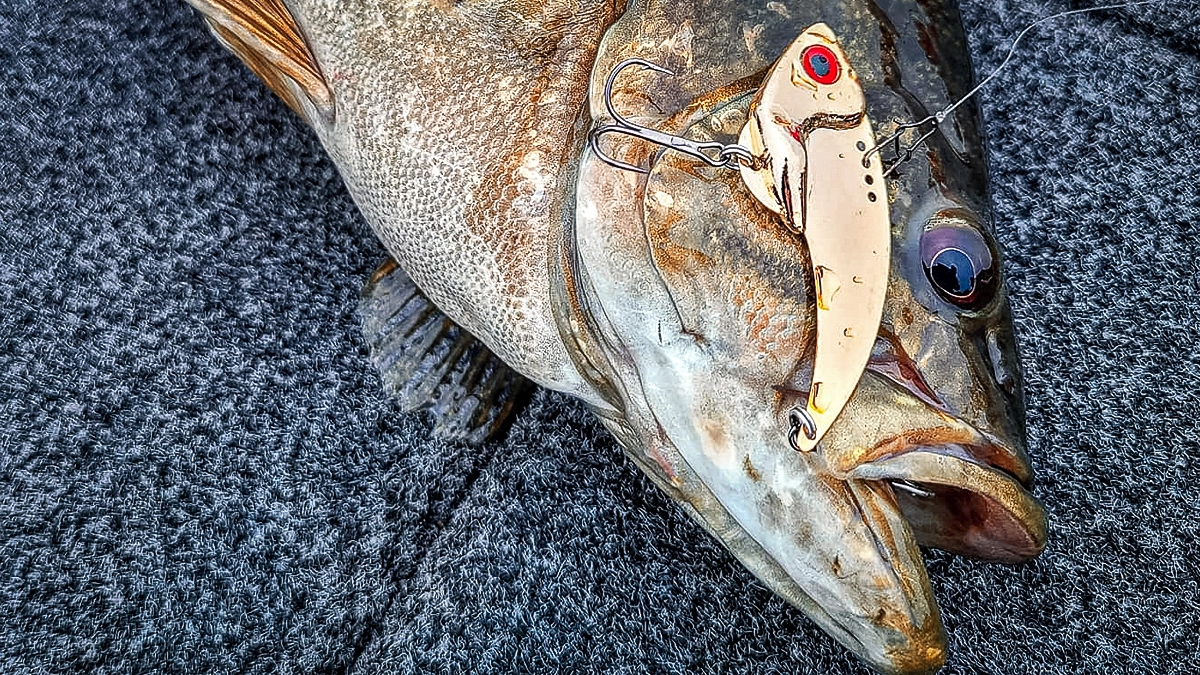
Best Rods for Blade Baits
I custom build most of my rods from MudHole Custom tackle, with blanks from their MHX and CRB lines, but there are a few rods on the market that fit the bill perfectly.
The Shimano Convergence D series or St. Croix Black Bass Series spinning rods offer excellent options in the 6’6” to 6’8” medium-action lineup. You’ll always want spinning rods for this application. You can cast further and take up more line with a spinning setup than a casting setup.
How To Pick a Reel and Line
For a reel, you want to stick to that 2500 to 3000 size range with a gear ratio of 6.2:1 or higher; you want to be able to take up line quickly. I’ve been having great success with the Dawia Tatula and Shimano Miravel spinning reels.
They seem to hold up well in colder weather and have smooth gears, great drag and fast gear ratio options. That paired with 10-pound Cortland Master Braid with a 10-pound mono leader and you’re set!
You want mono over fluorocarbon simply because flouro can get extremely brittle under cold temperatures and having the extra stretch isn’t a bad thing when fighting fish with treble hooks.
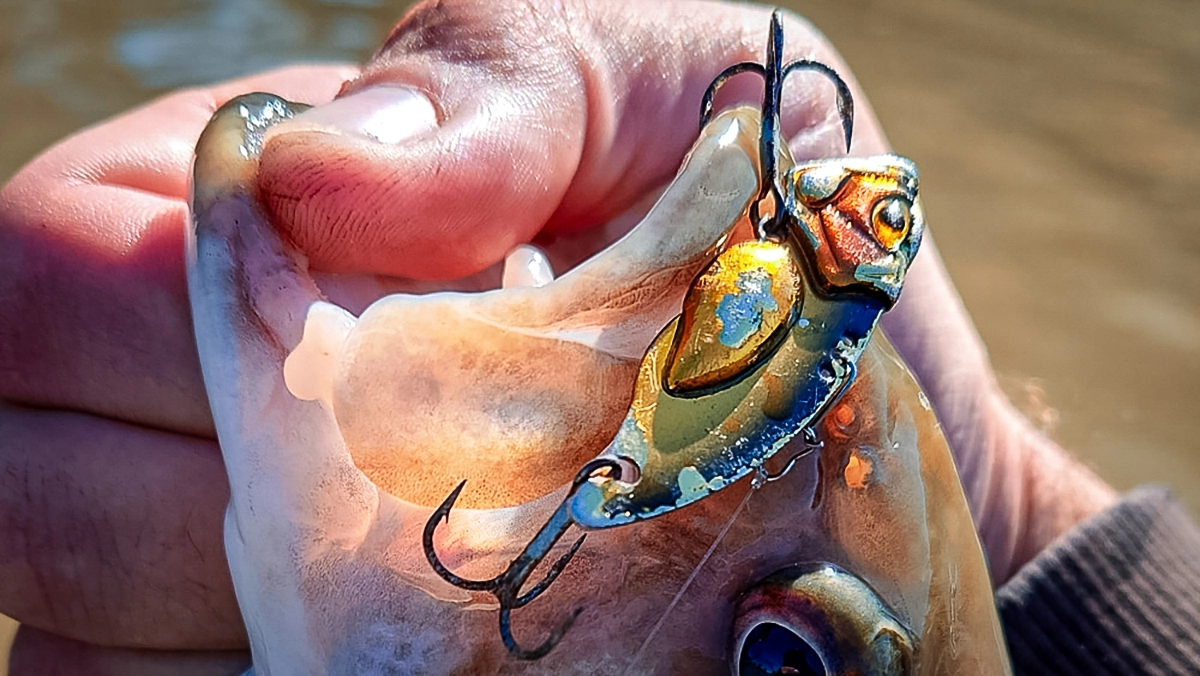
Choosing a Blade Bait
The sheer number of blade bait options on the market can be a little overwhelming, and there’s a lot to consider: how many holes are on top, shape, color, size, weight, and action — you have to think about all of that when choosing the right blade bait.
You’ll always have your old standbys, like the Original Silver Buddy, Heddon Sonar, or Cotton Cordell Gay Blade, and they all work well, but there are some new age options that have some amazing characteristics that put fish in the boat consistently.
My favorite go-to lately is a Fish Sense Binsky. Originally hand crafted in Northern New Jersey by Steve Carey, these baits were made to mimic larger baitfish.
The action on these baits is intense with vibrations being felt all the way to the reel seat. I feel like the size of the bait is what gets me the most. It triggers larger bass into biting.
On the other end of the spectrum is the Molix Trago Vib. This small compact blade bait is ideal for situations when baitfish are smaller and the fish are feeding on more bottom dwelling fish like sculpins or darters. The tight vibration makes for a more subtle action to help trigger bites in extremely cold temperatures. Both have been major fish catchers in my boat for the past several years.
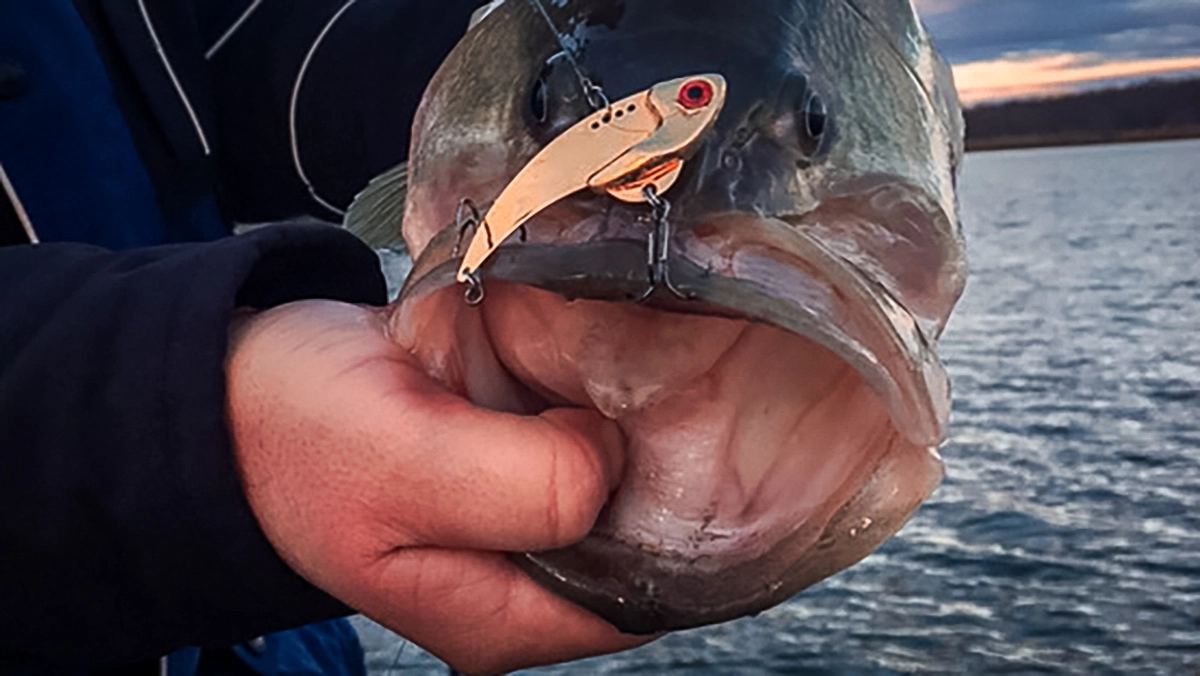
A Bit About Color and Size Choice
Even with all the possible options mentioned above, you just have to not get overwhelmed and keep things simple. For starters, color can be kept as simple as possible. Silver and gold will always be the number one producers.
As a rule of thumb, I like gold on cloudier days and silver on sunnier days. Why? Mainly because of the contrast they both give off depending upon how much sun there is. Does chartreuse and red craw have a time and place? Yes, in dark, dingy, dirty water when visibility is at its worst.
As far as sizes are concerned, I try not to go over 1/2-ounce, even on windy days or when fishing extremely deep water. If I can get away with a 1/2-ounce, I’m throwing it.
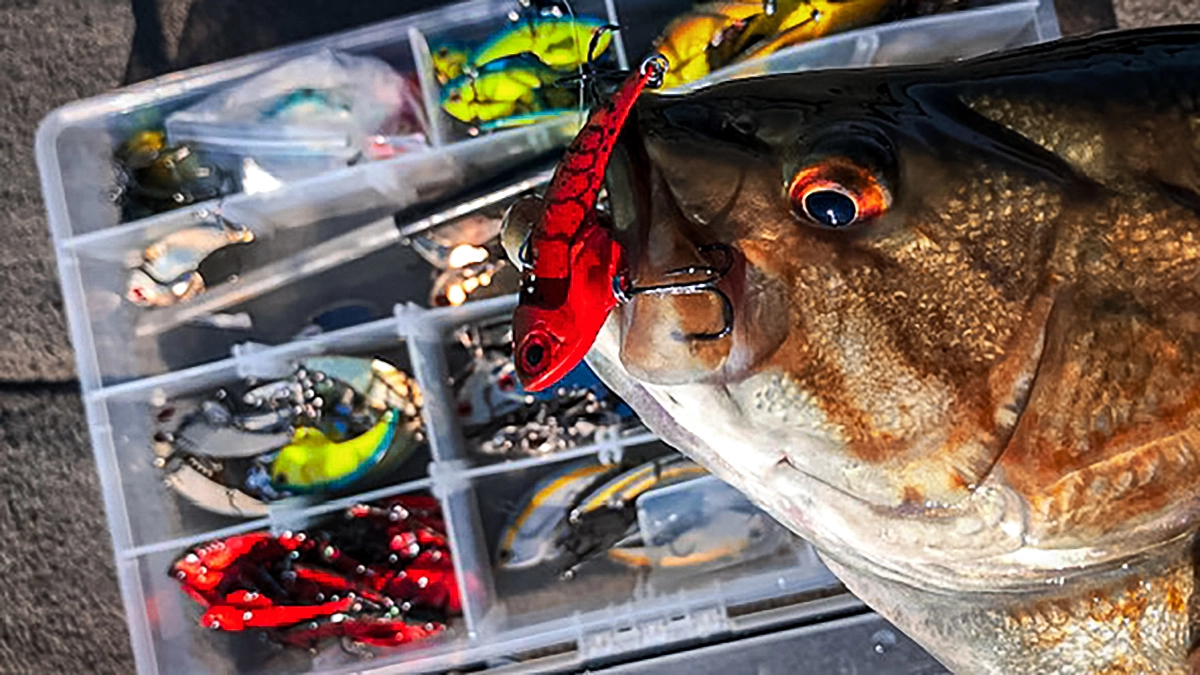
The only time I ever go lighter to a 1/4- or 3/8-ounce is when the water is shallower than 20 feet. I can get a much better feeling of the bait on the bottom when throwing those lighter baits a little shallower.
Rigging and Fishing Blade Baits
Some baits also have multiple holes to attach your snap to. The closer to the head of the bait the hole is, the better it is for casting, and vice versa for vertical jigging. For example, the Binsky has four holes on it; I like to keep my snap in the second hole as that seems to be perfect for vertically jigging it or casting it away from the boat. Play with different hole positions until you find the right way that works for you.
Lastly, the way you work the bait can make or break being successful with blade baiting. There is most certainly such a thing as over-working the bait. Usually, from my experience, the more action that is imparted, the fewer bites you get.
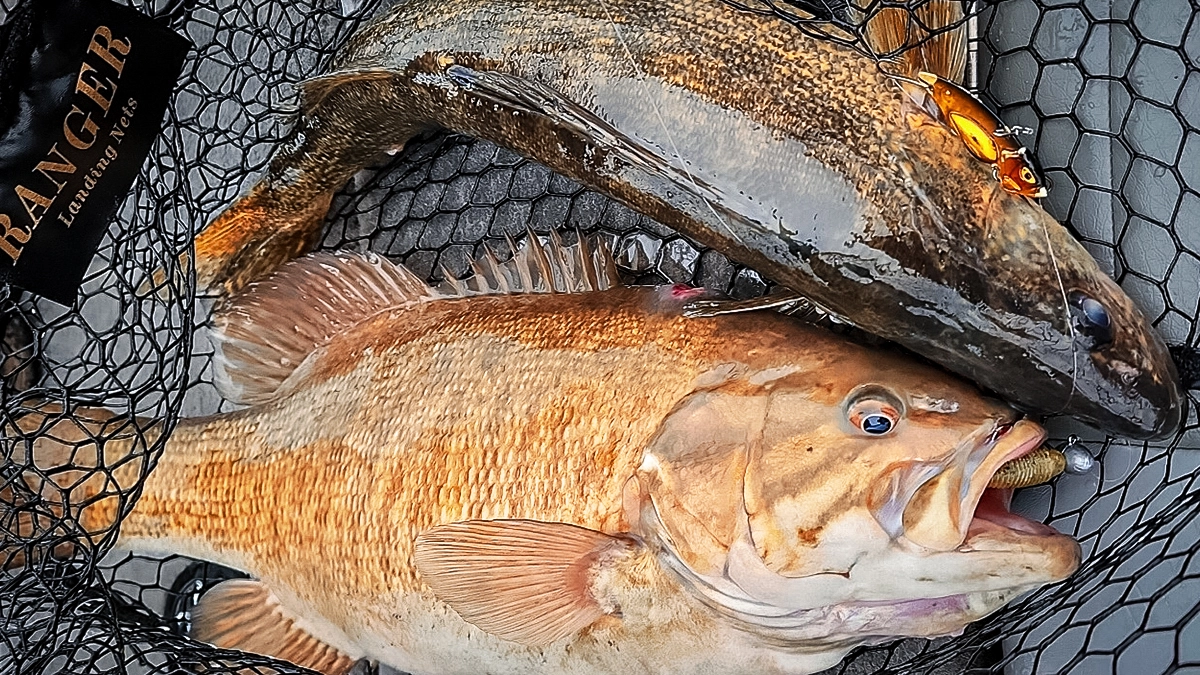
You can cast them and reel them back after the bait hits the bottom, but the most effective way to retrieve blade baits is to make a long cast, let the bait hit the bottom, hop the bait up and once you feel three or four vibrations, let the bait fall back to the bottom; repeat that all the way back to the boat.
Three or four vibrations usually means the bait is coming a foot or less off the bottom. More than that, and you’re getting too aggressive. That’s why you need a shorter rod, so you don’t over lift the bait. Remember, 90% of your bites come as the bait is falling back down to the bottom while the other 10% is when the bait is lifted off the bottom.
Hopefully, this increases your success in the fall and into winter. This bite can be seriously addictive and can result in some of the biggest fish of your year!


